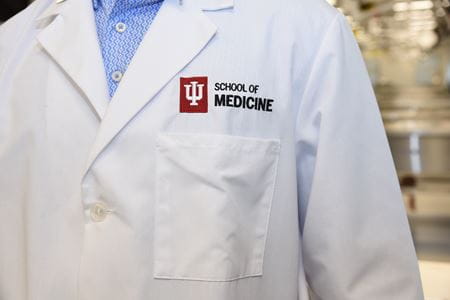New funding will target recruitment of students from underserved areas
INDIANAPOLIS—A new $15.4 million grant will help Indiana University School of Medicine recruit and educate medical students to better care for underserved populations, in hopes of improving health care across Indiana.
The Health Resources & Services Administration (HRSA) grant will provide nearly $4 million for each of the next four years to the Indiana Primary Care Advancement in Clinical Training (INPACT) program. The goal of the program is to recruit more students from medically underserved areas of the state and provide doctors with the tools needed to offer high-quality primary and specialty care to vulnerable communities.
Scholarships will be provided to medical students who plan to practice in primary care specialties of pediatrics, family medicine and internal medicine. Experiential training opportunities will also be expanded throughout the state, particularly in underserved Indiana communities.
“INPACT will enhance the IU School of Medicine curriculum by focusing on health system sciences, including social determinants of health and primary care skills that can benefit underserved communities,” said Bradley Allen, MD, PhD, senior associate dean for medical student education and the principal investigator on the INPACT team. “This grant will help us recruit more students from medically underserved parts of the state who are more likely to return to serve those communities’ health care needs as physicians.”
Through INPACT, the school also looks to expand its collaborations with the clinical facilities serving the underserved communities—helping students develop the skillsets needed to meet the unique needs of their patients and help to close the health care gaps.
The project will help improve the flow of IU School of Medicine graduates into the expanding number of primary care residency programs around the state. INPACT funding will also be used to expand the school’s Master of Science in Medical Science (MSMS) program—a two-year masters program developed to better prepare students to be successful applicants to medical school. The new funding will be used to help increase recruitment of prospective students from medically underserved areas in Indiana.
In addition, the project will help students develop skills in advocacy and leadership so graduates can partner with communities to improve health. This will be accomplished in collaboration with the school’s large number of clinical partners—120 hospitals, clinics, practice groups and health care organizations—to assist with educational placements. Clinical partners include 26 critical access hospitals and 13 federally-qualified health centers statewide.
"It is my hope that through these grant funds, IU School of Medicine will be able to innovatively enhance our medical curriculum in topics of health equity and delivery of health care for underserved communities," said Paul M. Wallach, MD, executive associate dean for educational affairs and the co-principal investigator for the statewide INPACT project team. "At the same time, we want to strengthen educational experiences in primary care so that IU School of Medicine graduates are well-grounded in working with communities and delivering high-quality care for each patient."
This project co-aligns with the school’s previously funded Primary Care Reaffirmation for Indiana Medical Education (PRIME) program, which aims to improve preparation of IU medical school graduates in primary care skills and delivery to underserved populations as well as help students gain understanding, direct immersion and expertise in the impact of health care disparities in Indiana. Since the start of these projects in 2020, IU School of Medicine has received $31 million in grant funding for HRSA-funded projects, which the school has supplemented with 10% matching funds.
About IU School of Medicine
IU School of Medicine is the largest medical school in the U.S. and is annually ranked among the top medical schools in the nation by U.S. News & World Report. The school offers high-quality medical education, access to leading medical research and rich campus life in nine Indiana cities, including rural and urban locations consistently recognized for livability.




